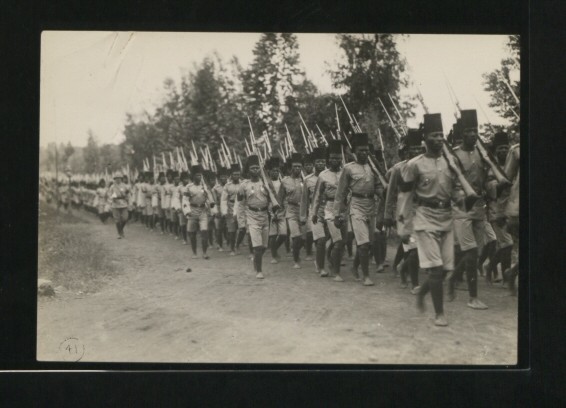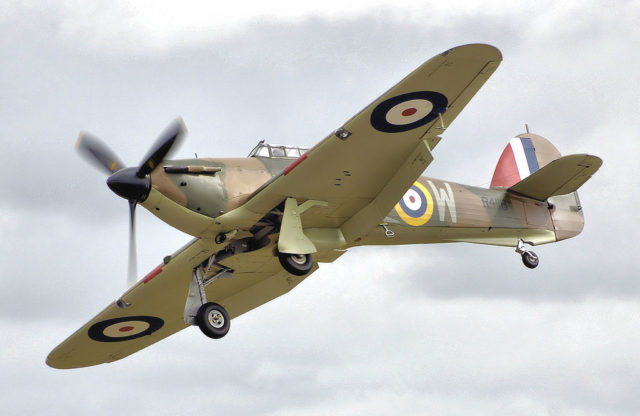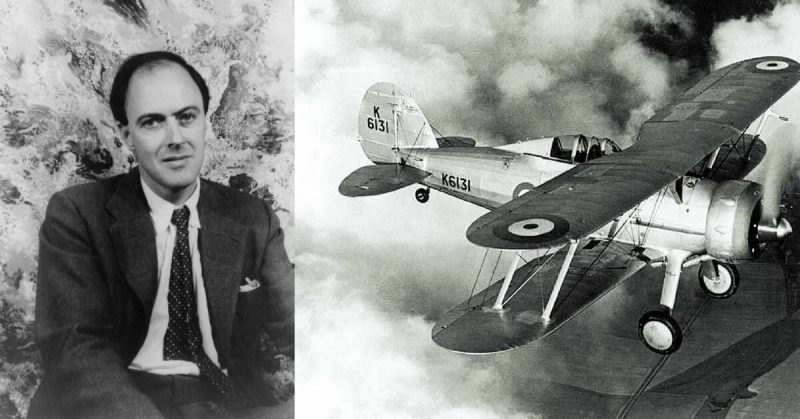Roald Dahl was largely known as a children’s book writer behind the titles such as Charlie and the Chocolate Factory, Fantastic Mr. Fox, Matilda, The Gremlins, and James and the Giant Peach. Following the recent death of an American actor, Gene Wilder, who brought to life the amazing character of Willie Wonka in the film adaptation of Dahl’s novel Charlie and the Chocolate Factory, we were all reminded of this profound book which influenced generations of people.
But behind his writer’s persona, Dahl nurtured a splendid military and diplomatic career.
Roald Dahl was born into a Norwegian family living in Cardiff, Wales, in 1916. Even though he rose to be a prominent writer, during his school years, his teacher didn’t think much of him. His English teachers wrote in one of his school reports: “I have never met anybody who so persistently writes words meaning the exact opposite of what is intended.”
After finishing his education in 1934, Dahl got a job in the Shell Petroleum Company. He was first sent to work in Kenya and then in Dar es Salaam, Tanzania. Tanzania was one of the former German colonies which were handed over to the British after WWI. A community of several hundred Germans still inhabited its capital city, so when the war broke out in 1939, the British decided to arrest all German citizens to prevent potential resistance.
Roald Dahl, a British subject, joined the Army in 1939 and was given the rank of a lieutenant in the King’s African Rifles, commanding a platoon of Askaris. Askaris were indigenous troops serving in the colonial army. After only a month in the Army, Dahl joined the Royal Air Force. He was accepted for training in Nairobi, Kenya, among 16 other applicants. Only three of his classmates, besides himself, survived the war.
In Kenya, he received training and managed to collect seven hours and 40 minutes experience in a De Havilland Tiger Moth. Dahl continued his training in Iraq, at RAF Habbaniya, 50 miles (80 km) west of Baghdad. He was commissioned pilot officer on 24 August 1940. Following six months’ training on Hawker Harts, Dahl was made an acting pilot officer.

Assigned to the No. 80 Squadron RAF, Dahl was given control over an obsolete Gloster Gladiator ― the last biplane model used by the British as a fighter aircraft. He didn’t receive any additional training concerning aerial combat, nor the Gladiator since this was the first time he flew this plane. This led to a mishap in September of 1940.
Dahl was ordered to fly from Abu Sueir in Egypt, on to Amiriya to refuel, and again to Fouka in Libya for a second refueling. From there he would fly to 80 Squadron’s forward airstrip 30 miles (48 km) south of Mersa Matruh. On the final leg, he could not find the airstrip and, running low on fuel and with night approaching, he was forced to attempt a landing in the desert.
He crash-landed and was badly hurt, temporarily losing his eyesight. Dahl barely had enough strength to crawl away from the flaming airplane, which exploded soon after the crash. Luckily he was found by a rescue team and was sent to the Royal Navy hospital in Alexandria.
As the process of healing dragged on, Roald Dahl commenced a turbulent love affair with one of the nurses, Mary Welland, but that’s another story. Besides, a gentleman should never tell, and nor should I, for that matter.
So, in 1941, the would-be writer recovered and was back with his squadron. The battle for Greece was heating up, and Dahl was sent on his first combat mission. His squadron was based near Athens when the Germans invaded, and RAF supported the Greek Army during their futile defense effort, but only 18 planes were active during the campaign.

Dahl was now flying a Hawker Hurricane. On 15th of April, 1941, he solely intercepted a group of six Junkers Ju-88s that were bombing ships near the port of Chalcis and shot one down. Just one day after, he repeated his success, downing one more bomber.
On 21 April 1941, Dahl took part in the “Battle of Athens,” alongside with one of the highest-scoring British Commonwealth aces of World War II, Pat Pattle, and Dahl’s friend David Coke. Of 12 Hurricanes involved, five were shot down, and four of their pilots killed, including Pattle. Greek observers on the ground counted 22 German aircraft downed, but because of the confusion of the aerial engagement, none of the pilots knew which aircraft they had shot down. Dahl described it as “an endless blur of enemy fighters whizzing towards me from every side.”
During the battle, Dahl shot down at least one enemy aircraft, but due to the mentioned confusion, it was never confirmed.
After the defeat in Greece, Dahl retreated to Egypt, along with what was left of his squadron. There he shot down a Vichy French Potez 63, and another Ju-88 bomber. He soon started having strange headaches that caused him to black out. Roald Dahl was invalided home to Britain. Though at this time Dahl was only a pilot officer on probation, in September 1941 he was simultaneously confirmed as a pilot officer and promoted to war substantive flying officer.
He spent the rest of the war years serving as a diplomat and an intelligence officer in Washington, writing propaganda material for the American public and notifying Winston Churchill directly on the behavior of Theodor Roosevelt. Dahl referred to his service later by stating: “My job was to try to help Winston to get on with Roosevelt, and tell Winston what was in the old boy’s mind.”
He left the service in August 1946 with the substantive rank of squadron leader. His record of five aerial victories, qualifying him as a flying ace, has been confirmed by post-war research and cross-referenced in Axis records.
